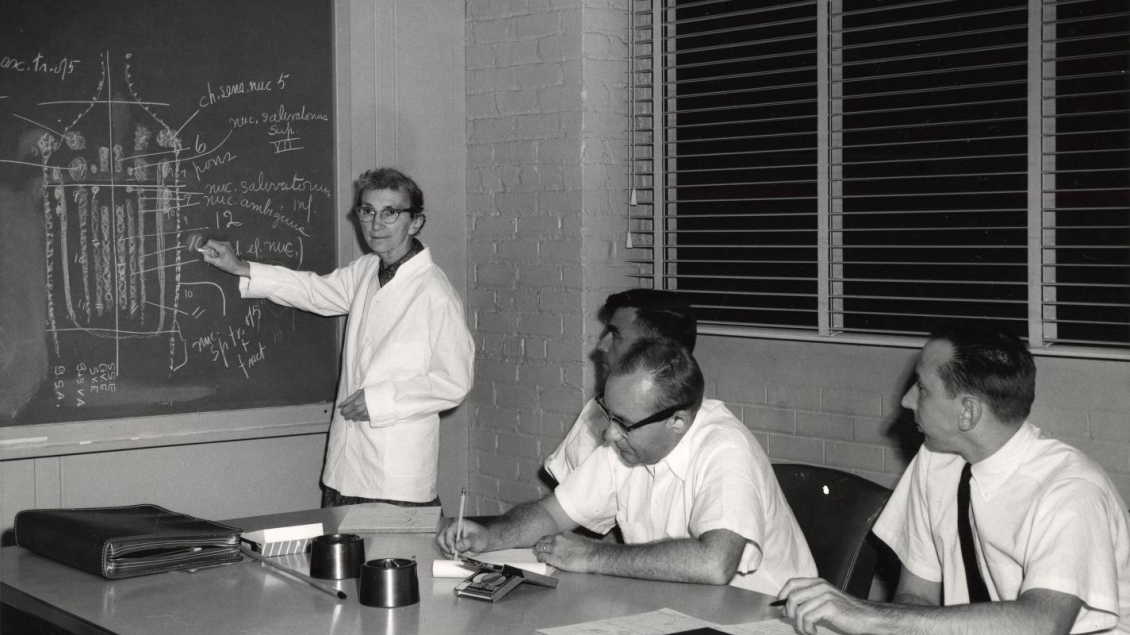
The U-M Medical School Department of Neurosurgery has a rich and proud history. To date, the department has had six chairpersons who have helped shape it into what it is today.
In July 2001, Neurosurgery was given full departmental status at the University of Michigan, elevating it from a Section of Surgery to the Department of Neurosurgery and allowing the department to take a more active role in the higher-level decision-making processes of the Health System as a whole.

In 1920, Dr. Max Peet, who was trained as a general surgeon, began to develop what would become a world-class neurosurgical service at the University of Michigan.
He joined the Department of Surgery as an instructor in 1916 and was encouraged to specialize in surgery of the nervous system. By 1918, Dr. Peet was doing mostly neurosurgery and the specialty was officially recognized as a subspecialty.
He was appointed Section Head and remained in that position until his death in 1949. Under his guidance, the subspecialty flourished, gaining a strong reputation for clinical and educational excellence.
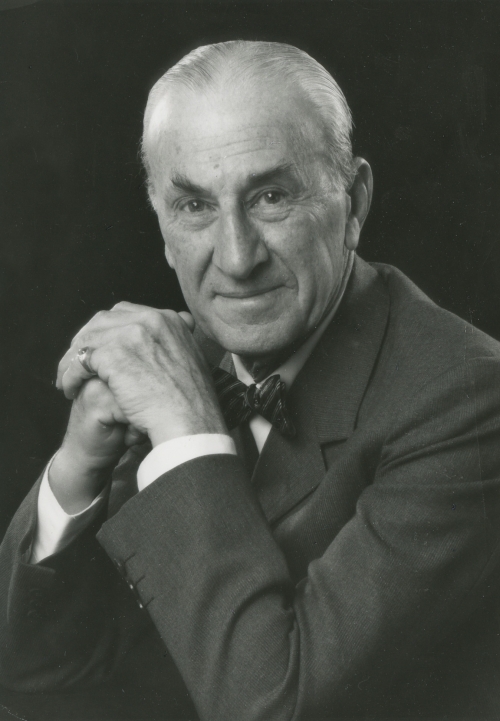
In 1926, Dr. Edgar Kahn, son of famed architect Albert Kahn – who designed many of the well-known buildings in Detroit and on the University of Michigan’s campus, including the original University Hospital – became the first neurosurgical resident to work with Dr. Peet. In 1949, when Dr. Peet died suddenly in the operating room, Dr. Kahn became the second head of the section.
Dr. Kahn created a research laboratory with renowned neuroanatomist Dr. Elizabeth C. Crosby; together, they defined many important aspects of correlative neuroanatomy. Dr. Kahn was one of the first neurosurgeons to introduce contrast material into brain abscesses to follow their size.
He also helped pioneer early nuclear medicine scans for localizing brain tumors. Dr. Kahn’s entire career was a gift to the University, as he only accepted one dollar per year in salary.
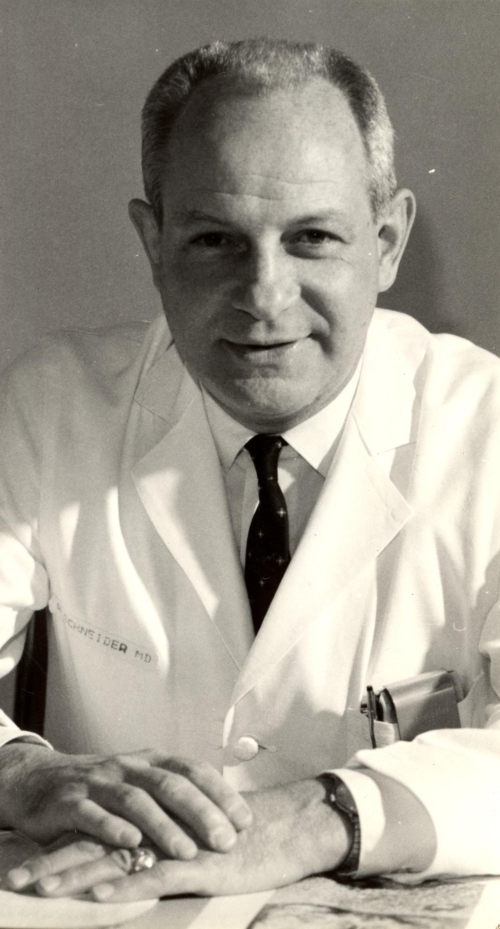
When Dr. Kahn retired in 1969, Dr. Richard Schneider became the third Chairman of Neurosurgery at the University of Michigan. Dr. Schneider trained at U-M under the direction of Dr. Peet.
His training was interrupted by military service during World War II, but he finished in 1948. Dr. Schneider added a significant element of basic laboratory research to U-M’s program.
He became world famous for his work with brain and spinal cord trauma and was the first to describe a number of clinical syndromes of partial spinal cord injury. Through close collaboration with Dr. Elizabeth Crosby, the two were able to describe in detail the anatomic alterations in these various clinical syndromes. Together they authored numerous landmark papers and several editions of the classic textbook Correlative Neurosurgery.
Through his work in the area of traumatic spinal cord syndromes, he made major contributions in the field of head protection. Many of his concepts translated into better helmets for various sports.

In 1981, Dr. Julian (“Buz”) Hoff became the fourth Chairman of Neurosurgery. Dr. Hoff helped lead the U-M Department of Neurosurgery into the modern era.
Under Dr. Hoff's leadership, the neurosurgical service and training program become more diverse and comprehensive. During his time as chairman, he expanded the scope of the laboratory and hired a number of full time basic science research faculty.
He remained as chairman for 24 years and provided inspiration to both his faculty and residents. Under his direction, the department grew and flourished.
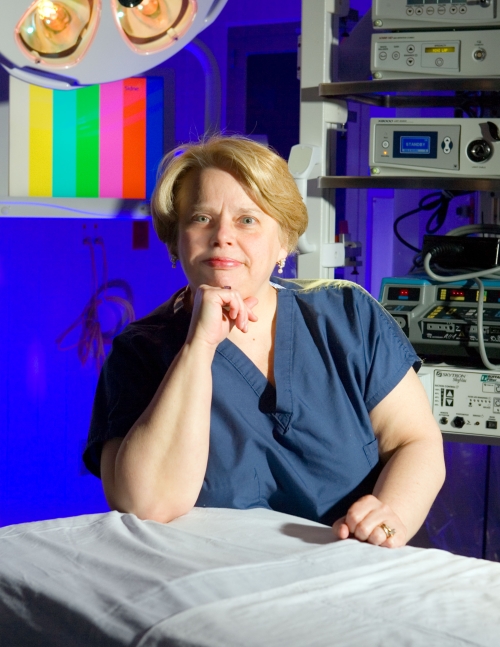
After Dr. Hoff retired, Dr. Karin Muraszko became the fifth chair of the Department of Neurosurgery in 2005, making history as the first female head of an academic neurosurgery department in the country. She was also among the first pediatric neurosurgeons to become a chairperson, as well as the first female Chair of the American Board of Neurological Surgeons.
In her time as chair, Dr. Muraszko recruited world-class basic science researchers to enhance laboratory effort in the area of neuro-oncology. She also recruited leaders to the clinical faculty – an effort that was essential to the expansion of U-M Neurosurgery’s residency training program.
While serving as Chair, Dr. Muraszko maintained an active clinical practice with research interests in pediatric brain tumors, Chiari malformations, developmental anomalies of the spine (particularly spina bifida) and craniofacial anomalies.
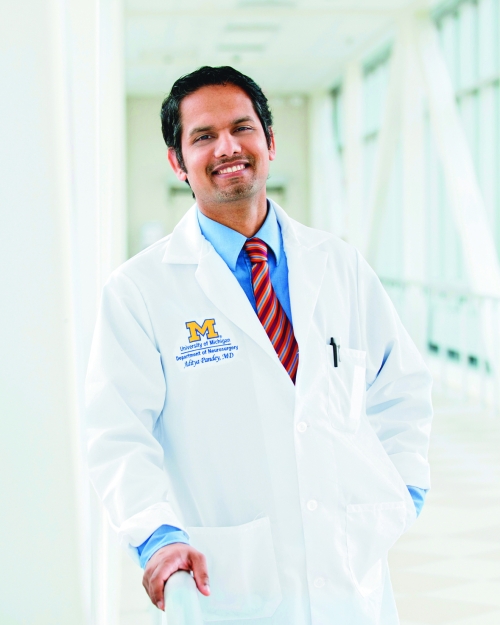
In 2022, Dr. Aditya S. Pandey became the sixth and current chair of the U-M Department of Neurosurgery. Dr. Pandey first joined the U-M Neurosurgery faculty in 2008.
He specializes in treating individuals who have blood vessel related diseases of the brain and spinal cord such as aneurysms, AVM, stroke, fistulas, cavernomas, and bleeding within the brain, as well as leading innovations with ultrasound and catheter-based technology for the treatment of ischemic and hemorrhagic stroke patient populations.
He serves as surgical director of the Comprehensive Stroke Center, director of strategic vision and outside collaborations in the Department of Neurosurgery, and director of the Endovascular Neurosurgery Fellowship.
Dr. Pandey is working to build upon the strong foundation and rich legacy built by his predecessors, and to propel the U-M Neurosurgery legacy forward into the future.
Find a continued, more extensive review of our department's history here.